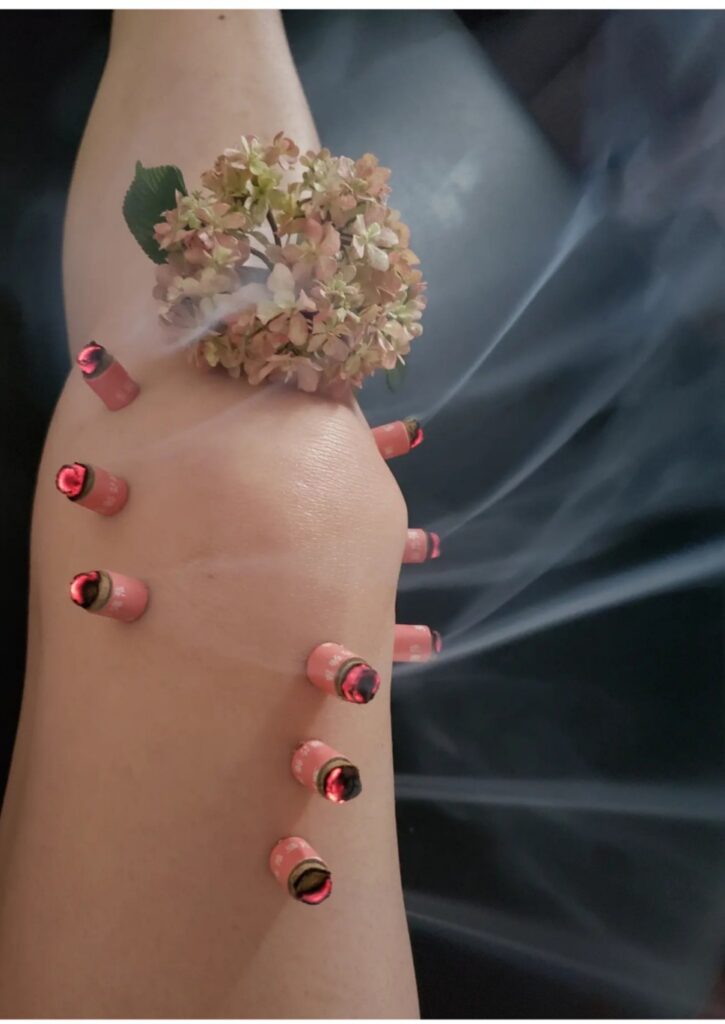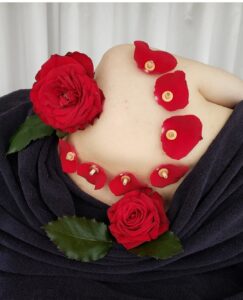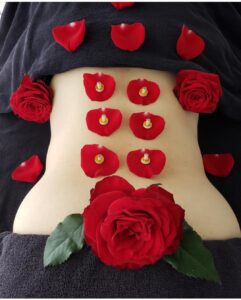膝痛み 階段を降りるときに怖い
Knee pain Scared to go down stairs
階段を登り降りする際に、膝が痛い原因として、変形性膝関節症があります。 変形性膝関節症は、加齢変性が主な原因で、女性に多く見られる膝の疾患です。 加齢とともに徐々に軟骨が摩耗・変性し、最終的にO脚・X脚が進行します。階段を昇降する際には、膝には体重の4~7倍の負荷がかかると言われています。それゆえ、階段を登り降りする際には、痛みや膝のぐらつきなどがでやすくなります。階段を移動するときの身体の動きに注目してみると、足を踏み出すときに膝を曲げて、階段に足を乗せます。そこから反対の足を踏み切るとき、すでに階段に乗っている側の膝に負荷がかかります。階段の上り下りは左右の膝に負荷をかけ続ける運動になります。変形性膝関節症から、ロコモティブシンドロームと呼ばれる運動機能の低下に陥ると、膝の痛みがますます悪化していきます。変形性膝関節症とは、軟骨がすり減ったことに起因する膝関節の変性が痛みを生み出す症状です。人間の膝は太腿の骨とすねの骨、膝の皿という3つの骨で構成されています。これらの骨がスムーズに動くためには、関節軟骨が大きな役割を果たしています。また、関節軟骨と共にクッションとしての役割を担っているのが半月板になります。変形性膝関節症は、関節のクッションの役割をしている軟骨がすり減っていきます。膝は何年にもわたって稼働するため、この症状は、特に高齢者に多く見られます。すり減った関節軟骨のかけらが関節包と呼ばれる部位にある滑膜を刺激すると、痛みを伴い炎症や熱感が発生して、これが、膝の痛みとなります。鍼灸治療としては、膝に負担をかけないように、膝周りを支える筋肉の血流を整え、血行を促進、膝の筋の状態を改善し、膝への負担を和らげていきます。膝の痛みや変形性膝関節症を放置しているとロコモティブシンドロームになります。ロコモティブシンドロームとは、骨や筋肉、神経といった運動器の衰えにより、自分の足で移動することが難しくなる症状です。膝は立つ、歩くといった動作において重要な部位です。膝が痛いから動くのを減少した結果、筋肉や骨まで衰えてしまってロコモティブシンドローム、通称ロコモになるというのが高齢者を中心に見られる悪循環です。当院では、変形性膝関節症に対して、鍼灸マッサージ治療と並行して、運動療法もおこなっています。運動療法は、適度な運動で膝周辺の筋肉を鍛え、関節への負担を抑制することが目的です。膝の運動療法としては、太腿の筋肉を鍛えていきます。
Osteoarthritis of the knee is a common cause of knee pain when climbing stairs. Osteoarthritis of the knee is a common knee condition in women, primarily due to age-related degeneration. With aging, the cartilage gradually wears down and degenerates, eventually leading to O- and X-legs. It is said that when ascending or descending stairs, the knee is subjected to a load 4~7 times greater than one's body weight. Hence, pain and knee wobble are more likely to occur when climbing up and down stairs. When moving up and down stairs, the knee is bent and the foot is placed on the staircase. When the opposite foot steps off, the load is placed on the knee of the side already on the staircase. Going up and down the stairs is an exercise that continually stresses the knees on both sides. From osteoarthritis of the knee, knee pain becomes increasingly worse as a result of a loss of mobility called locomotive syndrome. Osteoarthritis of the knee is a condition in which degeneration of the knee joint, caused by worn-out cartilage, produces pain. The human knee is composed of three bones: the thigh bone, the shin bone, and the knee plate. Articular cartilage plays a major role in the smooth movement of these bones. In addition, the meniscus plays a cushioning role along with the articular cartilage. Osteoarthritis of the knee causes the cartilage that acts as a cushion for the joint to wear away. Because the knee operates for many years, this condition is especially common in the elderly. When worn pieces of articular cartilage irritate the synovial membrane in an area called the joint capsule, it causes painful inflammation and a burning sensation, which results in knee pain. Acupuncture treatment includes improving the blood flow in the muscles that support the knee area, promoting blood circulation, and improving the condition of the knee muscles to relieve the strain on the knee. Knee pain and osteoarthritis left untreated can lead to locomotive syndrome. Locomotive syndrome is a condition that makes it difficult to get around on one's own feet due to the deterioration of motor systems such as bones, muscles, and nerves. The knee is an important part of the body in activities such as standing and walking. As a result of reduced movement due to knee pain, muscles and bones also deteriorate, resulting in locomotive syndrome, commonly known as locomo, which is a vicious cycle seen mainly in the elderly. At our clinic, we provide exercise therapy for osteoarthritis of the knee in parallel with acupuncture, moxibustion, and massage therapy. The purpose of exercise therapy is to strengthen the muscles around the knee through moderate exercise and to control the burden on the joint. Exercise therapy for the knee involves strengthening the thigh muscles.



